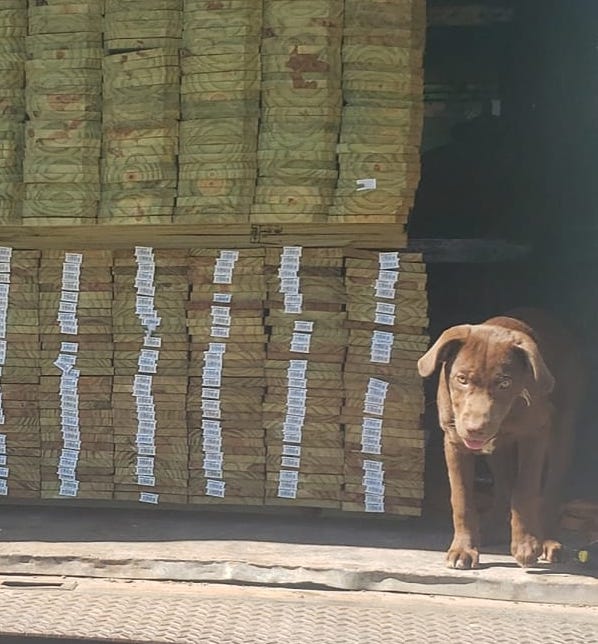
Pawsitively Perfect: Fencing Options for Your Furry Friends!
- Eric Temeyer
- March 15, 2024
- 03 Mins read
As a seasoned fence building contractor, I’ve had the privilege of working with countless homeowners who consider their pets as cherished family members. I even have a dog myself, Captain, who likes to ride around in my work truck!
Eric Temeyer
1. Select the right material
When it comes to choosing the right fence for your home, it’s essential to keep your pets’ needs in mind. After all, they deserve a safe and comfortable outdoor space to explore and play.
Wood
Wooden fences, particularly cedar or redwood, are a popular choice for pet owners. They’re sturdy, natural, and blend seamlessly with your landscape. However, avoid pressure-treated wood, as it may contain chemicals harmful to pets.
Vinyl
Vinyl fences are low-maintenance and pet-safe. They won’t splinter, scratch, or require painting. Plus, they come in various styles and colors to match your home.
Chain Link
Chain link fences are excellent for larger dogs. They provide visibility, security, and durability. Consider adding privacy slats if you want to reduce visibility.
2. Height Matters
Small Dogs
For small dogs, a fence at least 4 feet high is essential. It prevents them from squeezing through or hopping over.
Medium to Large Dogs
If you have medium to large dogs, opt for a 6-foot fence. It discourages jumping and climbing, ensuring your furry pals stay safely within the yard.
3. Solid vs. Open Design
Solid Panels
Solid panels offer privacy and reduce visual stimuli. They’re perfect for reactive dogs who get anxious around strangers or other animals.
Picket or Split Rail
Picket or split rail fences allow airflow and visibility. They’re ideal for social dogs who enjoy watching the world go by.
4. Dig-Proof Solutions
Wire Mesh
Bury wire mesh along the fence line to deter your furry excavators. It’s a simple yet effective solution.
5. Escape-Proof Gates
Self-Closing Latches
Ensure your gates automatically close behind you. It’s easy to forget to latch a gate, especially when your hands are full of groceries or dog toys.
Lockable Gates
When guests arrive, lockable gates prevent accidental escapes. Your pets will appreciate the added security.
6. Avoid Wide Gaps
Spacing Between Pickets
Keep picket gaps narrow to prevent small dogs from slipping through. A few extra inches can make a significant difference.
Chain Link Mesh Size
If you choose a chain link fence, opt for smaller mesh openings. It prevents curious noses from poking through.
7. Electric Fencing
Invisible Boundaries
Electric fences create invisible boundaries without obstructing views. Proper training is essential to ensure your pets understand their limits.
8. Consider Your Pet’s Personality
Climbers
If your dog loves to climb, choose a fence with minimal footholds. Smooth surfaces discourage their adventurous spirit.
Chewers
Avoid wood fences if your pet tends to gnaw on things. Vinyl or metal options are more durable and less tempting.
9. Maintenance Tips
Regular Inspections
Check for loose boards, broken latches, or gaps. Address issues promptly to maintain safety and aesthetics.
Trim Vegetation
Keep plants away from the fence to prevent hiding spots and potential escapes.
Stain or Seal
Protect wood fences from weather and wear by staining or sealing them every few years.